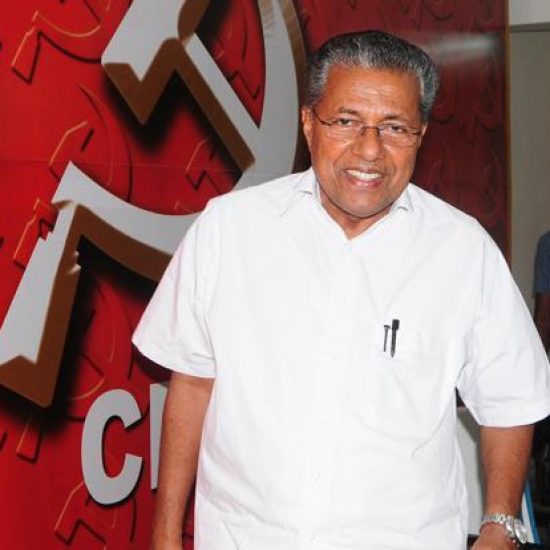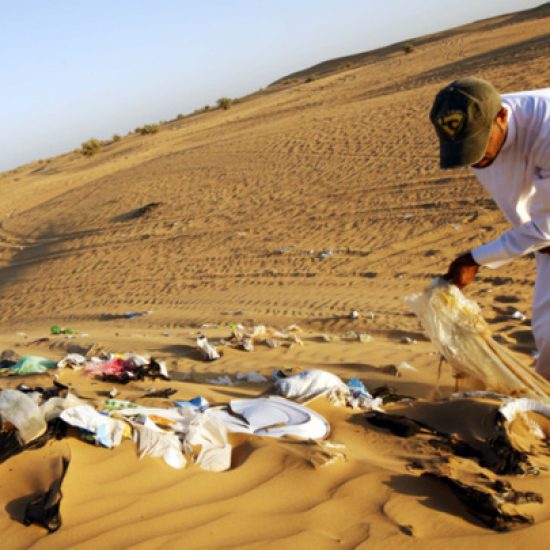 |By Rashidul Bari| When I was writing Grameen Social Business Model, a book detailing the search for a weapon to use against poverty and terrorism, Malala Yousafzai played a key, but kind of secondary, role, a supporting character. But I kind of found, when I was writing another article, “Why do they Hate Obama?” that the force of Malala kept trying to take over, kept trying to grab the spotlight. So I realized that there is another story I would like to tell, which would be the history and story of Malala, going back to Mahatma Gandhi up through Muhammad Yunus, and how to overcome the biggest challenges of the Indian Subcontinent, such as poverty and terrorism. After learning the news of Malala’s wining of the Nobel Prize, I really felt that there would be no better time to tell her story in great detail. Now lets begin by asking a simple question: Who is Malala?
|By Rashidul Bari| When I was writing Grameen Social Business Model, a book detailing the search for a weapon to use against poverty and terrorism, Malala Yousafzai played a key, but kind of secondary, role, a supporting character. But I kind of found, when I was writing another article, “Why do they Hate Obama?” that the force of Malala kept trying to take over, kept trying to grab the spotlight. So I realized that there is another story I would like to tell, which would be the history and story of Malala, going back to Mahatma Gandhi up through Muhammad Yunus, and how to overcome the biggest challenges of the Indian Subcontinent, such as poverty and terrorism. After learning the news of Malala’s wining of the Nobel Prize, I really felt that there would be no better time to tell her story in great detail. Now lets begin by asking a simple question: Who is Malala?
Is she a resident of Sawt Valley, Pakistan, who, in 2009, at only 12, started writing for BBC blogs taking a stand against the Taliban’s rules against female education? Is she a girl, who, in 2012, boarded her school bus ignoring the 99% probability of being shot by the Taliban? Is she a girl, who, in 2013, became the youngest speaker at the United Nations in history? Is she a girl, who, in 2014, became the youngest Nobel Laureate of all time? There is only one answer to the above four questions: yes. Now the follow-up question is this: how can one achieve so much at so young an age unless chosen by God to be a Servant of Education?
While writing an article, “Accelerating the Momentum Created by Malala,” in response to a terrorist attack on Malala in 2012, I developed a hypothesis and shared it with Dr. Daniel Kabat, with whom I collaborated on a physics book. “Malala is more than a 14 year old girl. God has chosen her to be a Servant of Education.” Dr. Kabat gave me a strange look, which I interpreted to mean, “Stop making political comments in the middle of solving physics problems.” Exactly two years later, however, on October 10, I woke up to a phone call from Kabat. “Rashidul, you were right. Perhaps the President of the United States has to be men all the time, but the messenger of God does not have to be.” He hung up without providing more details. I couldn’t solve this puzzle until I got to the Bobst Library at New York University. There, my eyes stuck at the headline of a New York Times story mentioning Malala, which read “Today, Malala won the Nobel Peace Prize along with Kailash Satyarthi, who, in 1980, founded the “Save Childhood Movement in India,” and has acted to protect the rights of more than 83,000 children from over 100 countries. I instantly disappeared from the Bobst to pop-up on the 4th floor of the East Building to share my reaction with Professors Robert Wallace and Jason Bolston. This is the first time the Nobel Committee chose the right person for the peace prize since 2006, when the award went to Muhammad Yunus who, through Grameen Bank, helped to educate thousands of children by helping their respective mothers break the cycle of poverty. In fact, the Nobel Prize for Malala and Satyarthi came at a time when Grameen was steadily losing its momentum because the Prime Minster of Bangladesh fired Yunus from the bank he created in 1983. Now the question is obvious: would the political trio from these three nations, Prime Minsters Narendra Modi, Nawaz Sharif and Sheikh Hasina, join with the Peace Trio to defeat poverty and terrorism as a team the way their predecessors defeated colonial rule and contained religious violence in the past under the leadership of Gandhi? Let’s consider the past for a moment.
In the nineteenth century, the primary challenge in the Indian Subcontinent was battling colonialism. In the twentieth century, it was religious violence between Hindus and Muslims. Today, it is discrimination and violence against women and children. The gloomy tone of this human catastrophe was captured by a global poll conducted by Thomson Reuters. India, Pakistan and Bangladesh are some of the most dangerous regions in the world for women and children, as they are continuously the victims of violence, rape, and murder in these societies. In fact, de jure equality between men and women has never been translated into de facto equality in these three nations, where women are considered inferior to men. Consequently, many crimes against women and children have gone unnoticed. This is why many people thought the crimes against Malala would also go unnoticed. I am glad they were wrong. In fact, the Taliban assault on a 14 year old school girl have triggered a mass outpouring of grief and anger across the world which turned into a wave and eventually produced a force of peace. The name of this force is not gravity, or electromagnetism or nuclear force—the name of this force is Malala. She is not only a daughter of Pakistan, she is a daughter of 7 billion peace loving people in this world, she is the daughter of those who came before her, Mahatma Gandhi, Dr. King, Nelson Mandela, Mother Teresa and Muhammad Yunus—she is our little angel: the Servant of Education. Now the question is simple: how can we use such a force to defeat the Taliban? This article, which will be divided into three parts, has the answer. In part one, I will present three case studies, Malala, Nirbaya and Maharani Das, to provide more evidence in support of the claim of Thomson Reuters that the Indian subcontinent is one of the most dangerous places in the world for women and children. In part two, I will identify the root cause of this problem: why someone becomes a terrorist, rapist or segregationist. In part three, I will present a personal account of Yunus, which consists of the solution to this problem, to tie the part one and two together.
Part one:
Let’s study the three cases, Malala, Nirbaya, Maharani Das, starting with Malala. On October 9, 2012, several Taliban gunmen stopped the bus that was carrying Malala to her home, boarded the bus, and pointed guns at everyone, asking for Malala. A heavily armed masked man searched for the girl, shouting, “We want to kill her because she is propagating against the jihadists. So, let me know, which one of you is Malala?” The gunman finally spotted Malala in the corner of the bus and immediately shot her in the head and said, “You’re a symbol of the infidels and obscenity, so you must die.” Malala barely survived, but Nirbhaya was not so fortunate. Like Malala, Nirbhaya also boarded a bus in Deli, India, with the intention of returning home. She became suspicious when the bus deviated from its normal route and its doors were shut. When Nirbhaya objected, a group of six men already on board began beating her with a metal rod until she lost consciousness and then pounced on her and dragged her to the rear of the moving bus, where they gang raped her. Once the men were finished raping and beating Nirbhaya, they threw her unconscious body out of the moving bus. She died almost two weeks later while undergoing treatment for severe damage to her internal organs caused by this horrendous sexual assault. The conditions for women in Bangladesh are not as bad as other two nations, mainly due to the work of Grameen, but 9 million members of Grameen and members of other NGO’s face different kinds of challenges. Many fundamentalists were outraged and they reacted with harshness. Grameen staff often faced cynicism from religious clerics because they offered microcredit to poor women and education to their children. In Tangail, for example, Grameen first encountered the extent of resistance. In many instances, religious leaders tried to shock uneducated villagers by telling them that a woman who borrows from Grameen and other NGO’s is moving into an evil area prohibited to women. They warned that these women would not be given a proper Islamic burial if they joined Grameen. Maharani Das, one of the millions of victims, was not even Muslim but faced discrimination anyway when she took a loan from Grameen. Her family tortured her repeatedly, claiming that Grameen had converted her to Christianity. Millions of women like Maharani are still denied their freedom and often are beaten to death when they break their silence. However, Malala, Nirbhaya and Maharani Das are only three of the millions of victims of violence against women. Furthermore, every year more than 50 million women are similarly assaulted in South Asia. These numbers reveal a terrible but neglected inequality that leads to tremendous social problems. This problem can be better understood through Amartya Sen’s classic essay, “More than 100 Million Women Are Missing,” where he used the term “missing women” to describe the large number of women in the world who are literally not alive due to discrimination. His article revealed that about 40,000 girls die annually in South Asia because their parents do not give them the same medical care that they give boys. In his book, Globalization, Development and Children’s Rights, Kailash Satyarthi has drawn similar outlines. Bride burning takes place approximately once every two hours in India, women are stoned to death approximately once a day in Pakistan, and physical torture for dowry occurs once every two minutes in Bangladesh. Furthermore, such marginal women are sometimes trapped and trafficked to the Middle East. In fact, the Middle East is a major destination for women trapped in involuntary servitude and, to a lesser extent, commercial sexual exploitation. Women from India, Pakistan, and Bangladesh who travel to the Middle East as laborers and domestic servants often become victims of involuntary servitude. Although the assaults on Nirbaya and Maharani Das, like millions of other victims, went unnoticed, it nevertheless encouraging that the outrage over the assaults on Malala gained momentum. I believe that Malala, who is only 17 now, will be able to complete the work Muhammad Yunus and Kailish Satyar started some 40 years ago.
Part Two:
Two root causes of gender discrimination and terrorism have been identified—poverty, and the ‘culture of poverty’—both are positively correlated. That is, there is a direct correlation between the poverty suffered by a family, and the probability that the children of that family may later become terrorists, such as the one who shot Malala, or rapists, such as those who attacked Nirbhaya, or extremists such as those who issued a fatwa against Maharani Das. I have examined it during my stay in the Dhaka Tajgoen slums in 2007. I asked a set of questions to 12 children whose median age was 13. “What are you going to be when you grow up?” They did not immediately respond. After a while, they began to mention suitable professions with which they were familiar: rickshaw driving, bus driving, shop keeping, blacksmithing, fishing, cooking, and begging. None said that they would like to become terrorists, rapists, or extremists, although statistics show it is likely that at least some of them will eventually end up becoming those things. I then asked them whether they had heard about Dhaka University. The answer was “no.” In contrast, I conducted a similar survey with the 12 children of the professors of Dhaka University, whose median age was 12. They all wanted to change the world much the same way Bill Gates and Steve Jobs did. They were also able accurately write the names of the 2006 Nobel Prize laureates. I have observed exactly the same consequences that Oscar Lewis observed with poor Mexican families, and realized that people who are raised in a ‘culture of poverty’ often lack motivation and ambition. Thus, the children of poor people are more vulnerable and leaders of the Taliban, for example, know that and often recruit these teenagers and unleash them to fight for Allah. Malala was right when she addressed this issue at the United Nations. They think that Allah is a tiny conservative being who would send girls to hell just for going to school. The terrorists are misusing the name of Islam for their own personal benefits. However, killing these extremists by dropping bombs will not solve the problem, because drone strikes only help to further fuel terrorism. So the question is simple, how can we overcome the biggest challenges of our time, poverty and terrorism? The answer is even simpler: education.
Part Three:
Soon after Grameen Bank was created, scholarships were made available for the children of Grameen members. Eventually, one of these children, a young woman, received her medical degree. She asked Yunus to accompany her back to her rural village in Bangladesh. The doctor introduced Yunus to her mother, a Grameen member, who was illiterate. Yunus recalls looking at the mother and thinking, “She could have been a doctor.” The mother then introduced Yunus to her mother, the doctor’s grandmother, and Yunus looked at the grandmother and thought as well, “She, too, could have been a doctor.” However, Grameen is no longer the most influential actor in terms of empowering women and children using education, since Hasina started an attack on the bank some three years ago. Unfortunately, I have seen firsthand how Grameen has slowly but steadily lost its momentum as a result of the Bangladesh government’s policies against it, while pondering solutions here in the Bobst Library at New York University. I recall the conversation I had with my Professors, Robert Wallace and Jason Blonstein, “A great event, Malala deserves recognition for her courage on her own behalf, on behalf of all women, and all her fellow human beings.” In the spirit of Gandhi, let’s ask the Political Trio to join with the Peace Trio, to unleash the greatest weapon of all time, education, to attack poverty and terrorism on all fronts. Like the Peace Trio, let’s help all the women and children of the Indian Sub-continent to use the momentum created by this year’s Nobel Peace Prize to accelerate women’s emancipation by each doing our part, simply by holding this chant in our respective hearts: I, too, am a Malala, and I, too, am a Servant of Education.
Rashidul Bari, CRISP Scholar of New York University, himself also a Servant of Education—holding five bachelor degrees in Political Science, Economics, Mathematics, Computer Science and Physics, respectively from three CUNY institutions, York College, City College of New York and Lehman College. He also holds a master’s degree from Brooklyn College. He can be reached at— [email protected].




